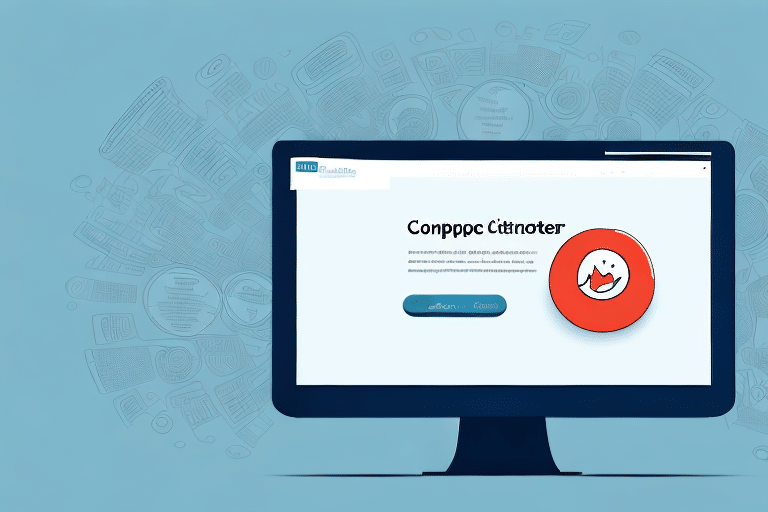Great communication is a competitive advantage. When teams cannot reach the right person quickly, projects slow down, errors multiply, and costs creep in. With the rise of remote work and dispersed teams, communication tools have become even more critical for keeping employees connected and productive. This guide compares the best team chat app options so you can select the right team chat software for your organization. We include a structured “best for” overview, a detailed comparison grid, clear selection criteria, and scenario-based recommendations. By the end, you’ll understand how to choose the right platform for your business and how different types of team chat tools and chat for business solutions serve different needs.
👉 Get a broader in our guide for Team Communication Apps and Internal Communication Tools.
Why Do You Need Team Chat Apps?
A good team chat app is more than just a messaging tool. It improves collaboration, reduces email overload, and helps teams make faster decisions.
- Enhancing collaboration: Chat apps let employees connect instantly, regardless of location. Real-time communication helps build stronger relationships and ensures everyone stays on the same page.
- Reducing email clutter: Endless email chains waste time. Chat apps streamline conversations into focused channels where decisions happen faster. In fact, studies from G2 show that companies using modern team chat software reduce internal email volume by up to 40%.
- Fostering community: Beyond work tasks, chat apps allow informal conversations that improve morale and foster a sense of belonging.
- Faster decision-making: With instant responses, teams avoid delays and keep projects moving on schedule.
Top Picks: Best Team Chat Apps by Use Case
Choosing the right team chat app can feel overwhelming given the number of options. To make it easier, here’s a summary of the leading platforms and the scenarios they fit best. This overview highlights which type of solution aligns with your organization’s needs.
| Tool | Best For | Starting Price* | Free Plan |
|---|---|---|---|
| HubEngage | Frontline & multi-channel comms | Custom business-friendly tiers | Yes |
| Microsoft Teams | Microsoft 365 organizations | Included in M365 bundles | Limited |
| Slack | Integrations & extensibility | ~$7–$12/user/month | Yes |
| Google Chat | Google Workspace simplicity | Included in Workspace | Yes (with Workspace tiers) |
| Zoom Team Chat | Teams already on Zoom | ~$6–$12/user/month | Limited |
| Discord | Always-on voice collaboration | Free core / low premium | Yes |
| Element / Mattermost | Self-hosted & security control | Varies by hosting | Yes (community) |
*Pricing ranges are approximate; always check vendor websites for current details.
The best team chat app depends on your context. Some tools integrate deeply into productivity suites, others focus on extensibility, while a few emphasize frontline usability or security control. The next sections explain how to evaluate them in more detail.
Comparison Grid — Top Team Chat Software at a Glance
When choosing between different team chat tools, it helps to see features side by side. The grid below compares leading platforms on the essentials: chat, video, admin, compliance, and multi-channel capabilities. Use it to narrow your shortlist before diving into deeper evaluation.
Summary: This grid shows how tools differ not just in messaging features but also in compliance, extensibility, and multi-channel delivery. It highlights why companies must match features to workforce needs, not just choose based on brand recognition.
Key Features to Look for in a Team Chat App
Before narrowing down providers, identify which features matter most:
- User-friendly interface: Clean design that is easy to navigate.
- Group and private messaging: Flexibility for teams and individuals.
- File sharing and storage: Built-in ability to exchange and organize documents.
- Integration with other tools: Connections with project management and HR systems.
- Security and privacy: End-to-end encryption, access controls, and admin rights.
In addition, keep in mind how these features translate to chat for business scenarios: usability for non-technical employees, integrations with payroll or HRIS, and compliance settings for sensitive industries.
By considering these essentials, you can avoid wasted spend on apps that look good on paper but fail in practice.
How to Choose the Best Team Chat App for Your Business
Before jumping into a specific tool, step back and think about what matters most for your company. Selecting team chat software is easier when you apply a decision framework:
- Stack alignment — If you are standardized on Microsoft 365 or Google Workspace, their chat tools may simplify administration (Microsoft Teams governance).
- Workforce type — Desk-based employees can handle channel complexity; frontline workers need lightweight, mobile-first apps.
- Governance & security — Confirm retention, device management, and access policies (NIST SP 800-53).
- Multi-channel needs — Critical updates should also reach emails, text messages, and digital signage to guarantee visibility.
- Engagement add-ons — Recognition and surveys drive culture, not just speed. Explore our employee recognition hub.
- Total cost of ownership — Licenses are only part of the equation. Include training, admin time, and risk of missed messages. In addition, weigh the opportunity costs of fragmented tools versus an integrated solution.
- AI & search — Evaluate how the tool surfaces information and supports compliance with AI features.
Scenario-Based Recommendations for Team Chat Apps
Every organization has different communication needs depending on its size, industry, and workforce type. Below are key scenarios and the types of team chat tools best suited for each. This helps you see how requirements differ by context and why no single tool fits everyone.
Scenario 1: Communication for frontline or deskless workers
Frontline employees often lack corporate email and rely on mobile devices. Platforms suited for this scenario should be mobile-first, offer simple authentication, and support multi-channel delivery (push, SMS, signage) so critical updates always reach the workforce. For more strategies, explore our frontline communication strategies.
Scenario 2: Communication with engagement and surveys
Some organizations look for more than just chat. Platforms in this category combine conversations with engagement features such as recognition, surveys, and rewards, so communication is tied to culture-building and measurable outcomes. See our employee survey hub for more.
Scenario 3: Communication in highly regulated industries
In sectors like healthcare and finance, compliance requirements drive the choice of tools. Here, organizations need platforms with strong audit trails, export controls, retention settings, SSO, and sometimes self-hosting options to maintain control over data and security.
Scenario 4: Communication requiring a full platform approach
Certain companies need to go beyond chat and add capabilities such as analytics, recognition, surveys, signage, and broadcast announcements. In this scenario, a full employee communications app is needed rather than a standalone chat tool.
Scenario 5: Communication for small businesses on a budget
For smaller teams, cost sensitivity is key. Free or low-cost chat apps can be a starting point, but they usually lack compliance and advanced features. As the business grows, scaling to a more robust communication platform becomes important. For advice on scaling, check out our internal communication strategy guide.
While frontline teams need mobile-first multi-channel delivery, culture-focused teams need engagement add-ons, regulated industries demand compliance features, some organizations need full platforms, and small businesses may prioritize affordability. A solution like HubEngage can address all these scenarios by combining multi-channel chat, engagement, and compliance in one platform.
HubEngage vs Slack vs Microsoft Teams vs Google Chat
Before deciding, it’s useful to see how the big names compare:
- HubEngage vs Slack — HubEngage offers chat plus SMS, email, and signage with engagement features. Slack focuses on integrations and extensibility.
- HubEngage vs Microsoft Teams — HubEngage is neutral and frontline-friendly. Teams is best for companies standardized on Microsoft 365.
- HubEngage vs Google Chat — HubEngage delivers multi-channel communication and analytics. Google Chat is simple, lightweight, and limited to Workspace.
Pricing: How Much Do Work Chat Apps Cost?
Most team chat software is priced per user per month, often between $0 and $12+ depending on features. Enterprise platforms can be higher, and free tiers are common but limited. In addition, don’t overlook hidden costs of admin time and lost productivity (Zapier comparison, TechRadar guide, PCMag overview).
Implementation Checklist
When rolling out a new tool, plan for adoption and governance. Additionally, use this list to ensure smoother implementation and higher adoption:
- Define channel structure and naming rules
- Set security and retention policies upfront
- Pilot with a diverse team before company-wide rollout
- Train managers and employees on best practices
- Use multi-channel delivery for critical announcements through unified employee communication platform
- Track metrics like read rates, acknowledgments, and response times
Conclusion
The best team chat app depends on your tech stack, workforce type, and governance needs. For frontline or distributed teams, choose team chat software that provides multi-channel communication, read confirmations, and engagement features. In contrast, if integrations or compliance are top priority, focus on platforms with deep ecosystem ties or audit capabilities. Ultimately, the right choice ensures every message lands and employees stay connected.
As older communication methods like email struggle to keep pace with modern workflows, chat apps play a critical role in boosting productivity, reducing clutter, and strengthening morale. By choosing wisely, you ensure that your teams are not just connected but aligned and empowered.
See HubEngage in action: Schedule a guided demo to explore chat, announcements, SMS, email, and digital signage in one platform.
FAQs
What is the best team chat app for business in 2025?
It depends on your stack and workforce. Teams works best for Microsoft users, Slack excels at integrations, Google Chat is simple for Workspace, and HubEngage is best for multi-channel communication and frontline reach.
Which team chat software works best for frontline or deskless teams?
Frontline teams need mobile-first, multi-channel communication. HubEngage offers SMS, email, push notifications, and digital signage alongside chat.
What’s the difference between team chat tools and collaboration suites?
Chat tools are for quick messaging. Collaboration suites add meetings and document sharing. Communication platforms like HubEngage go further with engagement and analytics.
Can work chats be monitored by admins?
Yes. Most apps allow retention, export, and audit controls. Transparency in governance is essential.
Is there a team chat app that also sends announcements by SMS or email?
Yes. HubEngage unifies chat, announcements, SMS, email, and signage in one platform.
What is the best free team chat app for small teams?
Slack and Google Chat offer free tiers. Open-source tools like Mattermost also have community editions. Plan for growth beyond free features.
Which team chat tools support acknowledgment tracking or read receipts?
HubEngage includes announcement confirmations. Others may require third-party apps or bots.
How do we migrate from WhatsApp to proper chat for business?
Establish policy, select a new tool, import contacts, train staff, and phase out shadow IT.
What is the most secure chat for business?
It depends on needs. Self-hosted tools provide control; enterprise tools like Teams offer advanced compliance.
What is the best chat for business in 2025?
The best chat for business balances usability, integrations, compliance, and multi-channel delivery. HubEngage is strong for frontline teams, while Teams and Slack serve enterprise office workers.
How much does team chat software typically cost?
Most plans range from free to about $12 per user/month. Enterprise or self-hosted solutions can be higher depending on features and compliance needs.
How do I measure the ROI of team chat software?
Track delivery times, read acknowledgments, engagement rates, and productivity improvements. Combine operational metrics with employee surveys for a complete picture.










